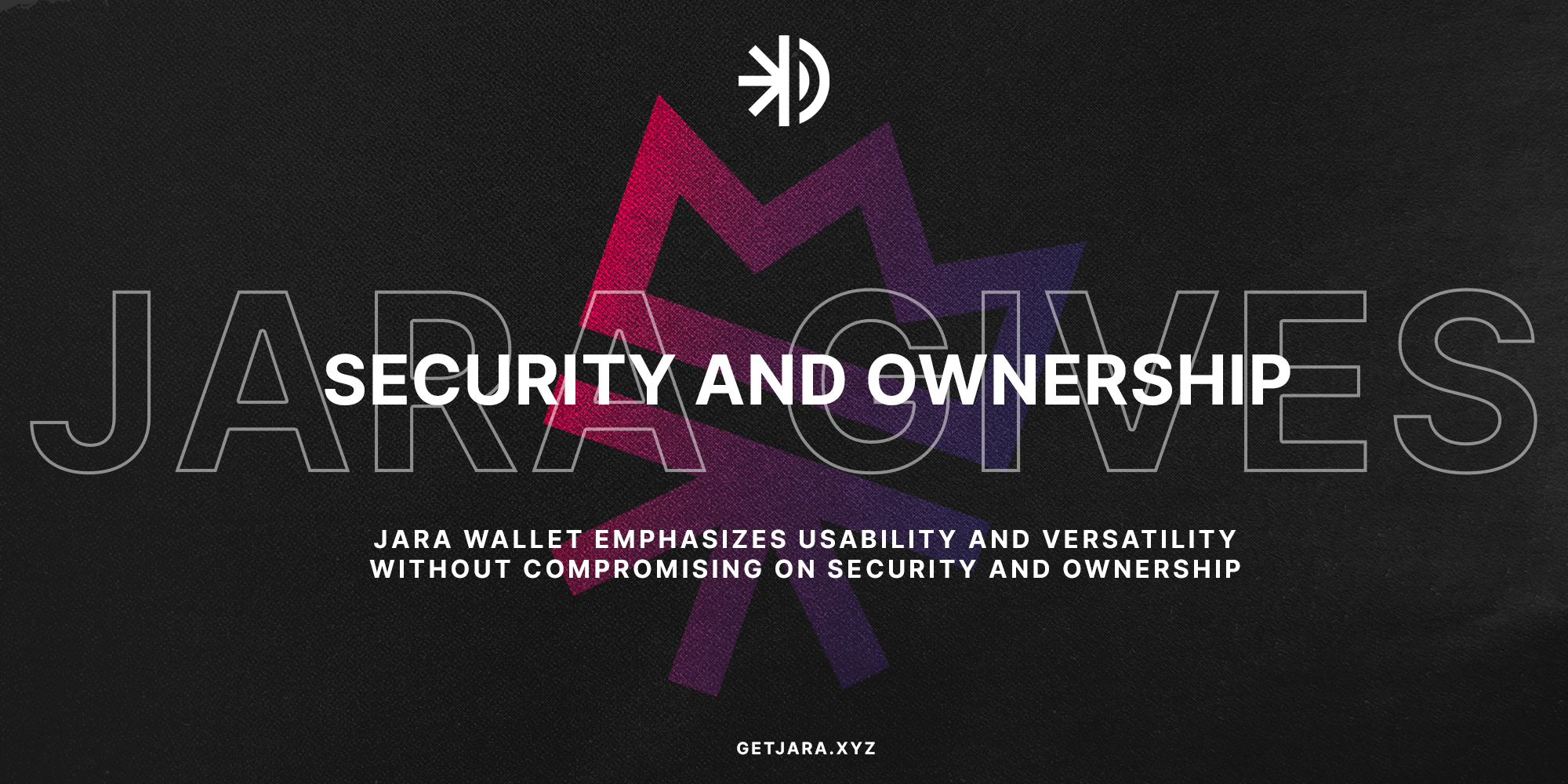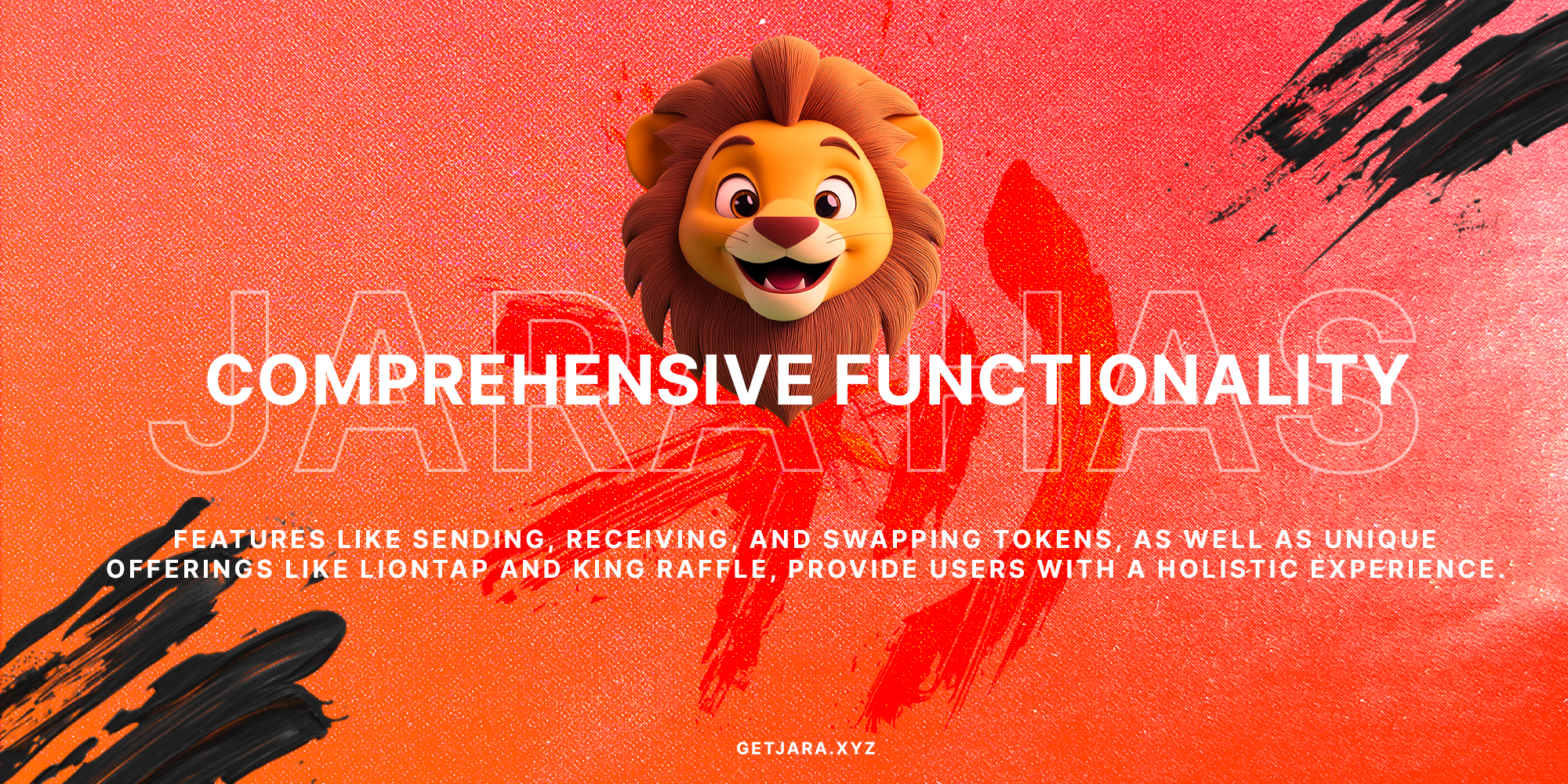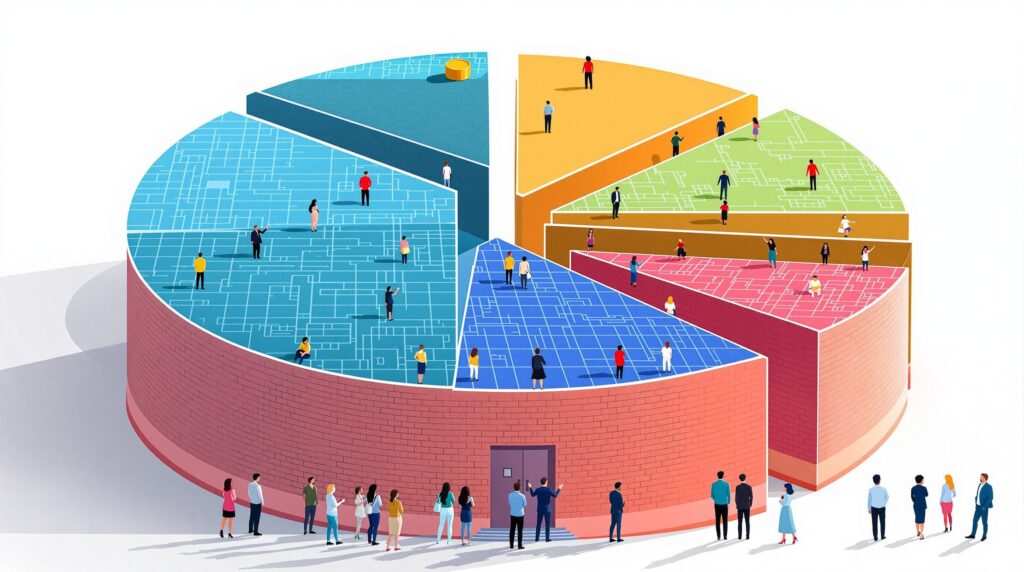Understanding Gas Fees in Smart Contracts
Gas fees are a crucial part of executing smart contracts on blockchain platforms like Ethereum. These fees represent the cost required to perform a transaction or operation, ensuring that the network maintains operational efficiency and security. Understanding how gas fees work is essential for anyone involved in blockchain activities, from developers to casual users. The gas price can fluctuate based on network demand, making it imperative to grasp its dynamics to optimize costs effectively.
What Are Gas Fees?
Have you ever wondered, “What exactly are gas fees on the Ethereum network?” Gas fees are charges paid in Ether (ETH) to compensate for the computational energy required to process and validate transactions or execute smart contracts on the Ethereum blockchain. These fees are vital for maintaining the network’s security by creating an economic incentive for miners to include transactions in the blockchain.
Gas fees ensure that the Ethereum network remains secure and efficient by compensating miners to validate transactions.
How Gas Fees Are Calculated
The calculation of gas fees might seem like deciphering a complex puzzle, but it’s actually rooted in a straightforward logic. Gas fees are determined by two factors: gas limit and gas price. The gas limit refers to the maximum amount of gas you’re willing to spend to execute a transaction, while the gas price is the amount you’re willing to pay per unit of gas, often measured in Gwei. The total gas fee is simply the product of these two components. Essentially, each operation you perform with a smart contract on the Ethereum network has an associated gas cost, which varies according to its complexity.
The Role of Gas Fees in Smart Contracts
- Incentivizing Miners: Gas fees are like tips for cab drivers on the Ethereum network. They incentivize miners to include your transaction in the blockchain, ensuring that your digital interaction gets processed.
- Preventing Spam: By requiring users to pay fees, the network minimizes spam transactions that could clog the system.
- Supporting Smart Contract Functionality: As smart contracts require computational power to execute their coded instructions, gas fees support these processes seamlessly and securely.
Dynamics of Gas Prices
Gas prices are akin to rush hour traffic fares—they change according to demand on the network. Have you ever noticed how the cost of a ride shares app fluctuates throughout the day? Similarly, gas prices rise during high network congestion and decrease during quieter periods. By understanding these fluctuations, users can predict and plan their transactions during low-demand times, substantially reducing costs.
Gas price dynamics are similar to peak-hour pricing on ride-share apps—higher demand equals higher costs.
Strategies to Handle Gas Fees
Now that you know what gas fees are and how they work, how can you manage them? Timing is everything. Like booking your flights off-peak, try scheduling transactions during times when network activity is lower, such as weekends or late at night. Tools like ETH Gas Station and GasNow provide real-time data on current gas prices, helping you select the most cost-effective times to transact. Another savvy approach is to strategically use platforms that offer gas fee refunds or discounts, significantly offsetting transaction costs.
Consider using tools like ETH Gas Station to find the most cost-effective times to perform transactions, especially during off-peak hours.
Implications for African Blockchain Users
For individuals and businesses in Africa, understanding gas fees becomes even more essential. As the continent undergoes a remarkable digital revolution, platforms like Jara are key. What is Jara? Jara is an innovative ecosystem fostering Africa’s digital asset economy, potentially set to surpass $200 billion. By enabling accessible financial services and providing a platform for tokenized real-world assets, Jara is at the forefront of bridging global capital to African assets.
Jara is paving the way for Africa’s digital transformation, offering a platform for investments and innovative financial solutions.
Conclusion: The Way Forward
In the vibrant landscape of blockchain, understanding and optimizing gas fees can significantly impact the ease and cost-effectiveness of your transactions. Embrace tools and strategies that help reduce these fees while exploring alternative platforms if necessary for better rates and efficiency. With the power of platforms like Ethereum and pioneering initiatives like Jara, the future of digital assets in Africa looks exceptionally promising. As the digital economy on the continent continues to expand, having a firm grasp on these concepts not only empowers users but opens doors to unprecedented economic opportunities.
Strategies to Minimize Gas Fees
Timing and Transaction Batching
Gas fees are an unavoidable part of using the Ethereum blockchain, but they don’t have to be a burden on your financial transactions. Wouldn’t it be amazing to lower these costs without sacrificing speed or security? Let’s dive into some effective strategies to help you achieve just that.
Timing Matters: First and foremost, the timing of your transactions plays a critical role in minimizing Ethereum gas fees. Just like booking a flight at less popular times can save you money, sending transactions during off-peak hours can reduce costs. The Ethereum network often experiences lower congestion during nights and weekends, making these periods ideal for transactions. Tools such as ETH Gas Station and GasNow offer real-time insights into gas prices, helping you pinpoint the best times to make your moves.
When is the best time to minimize gas fees on Ethereum? Generally, gas fees tend to be lower during off-peak hours, such as late nights and weekends, when network congestion is reduced.
Efficiency through Batching: Another wise approach involves batching multiple transactions. When you batch, it’s like carpooling your transactions into one vehicle—saving on gas by moving multiple actions simultaneously instead of individually. By consolidating multiple smart contract operations into a single transaction, you can greatly reduce the computational resources—and consequently, costs—needed for each transaction.
The use of smart contracts is revolutionizing the financial landscape in Africa, creating an opportunity for economic empowerment across the continent. Jara is at the forefront of this movement, building critical infrastructure for Africa’s $200 billion digital asset economy, enabling smoother and more affordable financial transactions. Want to be part of this digital revolution? Consider investing in the $JARA token, which not only powers transactions on Jara’s blockchain but also offers a robust ecosystem of features and benefits. You can explore more about these smart contract benefits and how they can make a real-world impact in Africa.
Optimal timing and strategic transaction batching are just the beginning. As we venture further into this topic, we’ll explore more ingenious methods to lessen the impact of gas fees, keeping your investments and transactions lucrative and effective. Stay tuned for more insights!

Utilizing Gas Tokens and Estimation Tools
When dealing with gas fees and smart contracts, many users often wonder, “What are gas tokens?”
Gas tokens are cryptocurrency units that users can create in times of low demand to save on higher transaction costs later.
Simply put, they function as a cost-effective strategy to manage the volatility of gas prices on blockchain networks like Ethereum.
Think of gas tokens as a prepaid card for gas fees on blockchain transactions. When gas prices are low, users can generate gas tokens, which essentially lock the gas price. Once the market rate for gas increases, you can redeem these tokens to cover the gas cost without spending more on transactions. Does this sound intriguing? Let’s dive deeper into how using gas tokens can be a game-changer in minimizing your gas fees.
What are Gas Tokens?
Gas tokens are a type of cryptocurrency specifically used to pay for transaction costs on blockchain networks, such as the Ethereum network. Much like traditional currencies that you might use to pay for goods and services, gas tokens act as a sort of “currency” needed to execute transactions and run smart contracts effectively. They are essential in the Ethereum ecosystem because every operation on the blockchain, from simple transfers to deploying smart contracts, requires computation power, and this power isn’t free.
- Economics of Gas: Think of gas as the fuel needed to operate a car. Just like how a car’s engine requires fuel to run, the execution of transactions on Ethereum needs ‘gas’. The cost of gas, known as gas fees, can fluctuate based on network congestion and the computational power required to process transactions.
- Price Fluctuations: Gas prices on the Ethereum network can vary widely, affected by network congestion and demand. When demand is high, Ethereum gas fees can surge, resulting in higher costs for processing smart contracts.
- Why Gas Tokens are Important: Gas tokens act as a hedge. When gas prices are low, users can purchase and store these tokens. Later, when prices spike, they redeem their tokens at the previous lower price, helping to reduce transaction fees.
- Market Trends: The demand for gas fluctuates, similar to how the tides change with the pull of the moon. By anticipating these changes, users can optimize cost savings with the help of the right estimation tools.
“Jara Wallet is your gateway to Africa’s $200B+ digital revolution. With $JARA, fuel your journey and be part of the change, harnessing strategic partnerships and transformative technology to bridge global capital with African assets.”
The Role of Estimation Tools in Managing Gas Fees
Ever wondered how you can precisely predict gas fees and avoid overpaying? Estimation tools are your answer. These tools help forecast gas fees by analyzing network trends, providing you with the insights you need to make informed decisions. If you want to minimize your costs, leveraging gas estimation tools is a smart strategy.
Estimation tools for gas fees can help users estimate transaction costs in real time, allowing them to optimize their spending and avoid excessive charges.
Top Estimation Tools to Consider
- GasNow: GasNow provides real-time gas price data directly sourced from mining pools, ensuring accuracy and reliability. It’s a go-to tool when you need to decide the best time to authorize transactions.
- Etherscan Gas Tracker: This tool is commonly recommended for its comprehensive view of live gas prices and transaction history. By analyzing data from the Ethereum network, it helps users time their transactions effectively, saving them blockchain costs.
- EthGasStation: An intuitive platform providing insights into the current gas price and transaction delays, allowing users to transact more efficiently by selecting the optimal gas price.
Importance of Reducing Gas Fees in Africa
Why is it crucial to focus on reducing gas fees in Africa? Imagine being a small-scale entrepreneur in Africa’s emerging digital market, where resources are limited, and every token counts. High gas fees can significantly inflate the cost of transactions, making it challenging for individuals and small businesses to participate in the digital economy. Accessing financial services in Africa is crucial for economic growth, and none knows that better than the team at $JARA, who work to bridge the gap between global capital and African assets.
By reducing gas fees, financial transactions become more affordable, promoting financial inclusion. This inclusivity makes a significant difference for small businesses and individuals across the continent, as it encourages more people to engage with digital assets without worrying about prohibitive costs.
Why are gas tokens significant? They allow users to manage their transaction costs proactively, especially in fluctuating markets, by pre-purchasing gas at lower prices to hedge against rising gas fees.
With Africa’s digital economy burgeoning, cost-effective blockchain transactions can bolster development initiatives, enabling users to maximize returns while minimizing unnecessary costs associated with blockchain technology (blockchain technology benefits). A perfect example of this concept is Jara’s revolutionary approach in leveraging the Lagos airport tokenization project.
How to Implement Gas Tokens and Estimation Tools
Looking to incorporate gas tokens and estimation tools into your strategy? It’s easier than you might think! Here’s a step-by-step guide to streamline the process:
- Select Your Gas Tokens: Research and select appropriate gas tokens such as GST2 or other tokens that suit your needs to take advantage of low gas price periods.
- Monitor Gas Prices: Regularly check gas prices using platforms like GasNow and Etherscan Gas Tracker to identify the most economical times to purchase gas tokens. This is a similar strategy to how smart contracts are managed to lower costs.
- Store and Utilize Tokens: Secure your gas tokens in a reliable wallet, such as the Jara Wallet, known for its robust security and user-friendly interface. This will allow you to use them as required without incurring hefty transaction fees, a tactic also seen in efficient transaction management.
- Plan and Execute Transactions: Using estimation tools, plan your transactions to coincide with periods of low network congestion to optimize your costs.
- Leverage Layer 2 Solutions: Consider using Layer 2 solutions like Optimistic Rollups, which reduce gas costs and enhance transaction speeds, similar to how smart contracts automate processes efficiently.
By following these steps and keeping an eye on market trends, you can effectively reduce your gas fees, ensuring that engaging with the Ethereum network remains a feasible and affordable option for all. In regions like Africa, where digital transformation is booming, these strategies are not only cost-saving but also open doors to new opportunities for financial growth and inclusion.
“Optimize your blockchain transactions with estimation benefits and secure a foothold in Africa’s evolving digital landscape!”
Adopting Layer 2 Solutions and Alternative Blockchains
In the ever-evolving world of blockchain technology, one challenge often stands out: the high cost of gas fees associated with smart contracts, especially on the Ethereum network. But what if there was a way to keep those costs in check without compromising on speed or security? The solution lies in Layer 2 solutions and alternative blockchains. Let’s explore these exciting advancements and how they can help reduce gas fees while supporting smart contract efficiency.
Understanding Layer 2 Solutions
Key Concept: What are Layer 2 solutions?
Layer 2 solutions refer to secondary protocols built on top of existing blockchains to enhance speed and scalability while lowering transaction costs. These solutions operate on top of the main blockchain, enabling off-chain processing of transactions.
- Optimistic Rollups: This technology aggregates multiple transactions into a single block before validating them off-chain. This process reduces the load on the main blockchain, resulting in faster and more affordable transactions.
- zk-Rollups: By bundling hundreds of transfers into a single transaction, zk-Rollups help decrease congestion and transaction costs. They ensure efficiency by minimizing computational resources.
Implementing these Layer 2 solutions can significantly minimize the cost associated with gas fees, making your blockchain activities smoother and more affordable. But how do these technologies work, and are there other options available? Let’s find out.
The Role of Layer 2 Solutions in Reducing Gas Fees
Layer 2 solutions are essential innovations in the blockchain ecosystem that aim to enhance efficiency and reduce the burdens of Ethereum’s mainnet. But how exactly do Layer 2 solutions reduce gas fees on the Ethereum network? They achieve cost savings by executing more transactions off-chain instead of directly on the Ethereum blockchain. When multiple transactions occur simultaneously, the network becomes congested, which raises the gas fee. By handling transactions off-chain, Layer 2 solutions help in relieving this congestion, leading to quicker and less costly processing. They enable batching of multiple transactions into a single bulk transaction, significantly reducing the computational resources required for processing.
Optimistic Rollups and zk-Rollups are Layer 2 scaling solutions that execute multiple transactions off-chain, enhancing Ethereum’s efficiency and reducing gas costs.
The Benefits of Layer 2 Solutions
Have you ever wondered how you can execute smart contracts without burning a hole in your pocket with high gas fees? Using Layer 2 solutions is one answer. These solutions include techniques like Optimistic Rollups, where multiple transactions are bundled and executed off the Ethereum main chain, only recording the results on chain. This not only brings down the overall cost but also expedites transaction times.
- Scalability: Layer 2 solutions significantly increase transaction throughput.
- Cost-Effectiveness: By moving transactions off the main chain, users can save on expensive fees.
- Flexibility: Layer 2 solutions often operate across various blockchain networks, enabling users to choose cost-effective options.
- Scalability: With reduced congestion, these solutions provide better scalability without sacrificing security, allowing more transactions to be processed simultaneously.
- Lower Costs: Generally, alternative blockchains like Binance Smart Chain offer lower transaction fees compared to Ethereum, allowing you to keep more of your assets.
- Faster Transactions: With less congestion, alternative platforms can process transactions more quickly, reducing waiting times significantly.
- Scalability: These blockchains are designed to handle high volumes of transactions per second, ensuring that your operations are not delayed.
- Optimistic Rollups: These are designed to improve scalability by assuming transactions are valid and only verifying them if challenged, which reduces fees and enhances quick transaction completion.
- zk-Rollups: Unlike Optimistic Rollups, zk-Rollups aggregate multiple transactions off-chain and submit a single proof to the main chain, ensuring both speed and security.
- State Channels: Allow multiple transactions off-chain between parties, consolidating them into a single transaction on the main chain, which significantly reduces costs and increases speed.
- Plasma: A framework that allows for the creation of child chains attached to the main chain, enabling high throughput transactions while leveraging Ethereum’s security.
- Validium: Similar to zk-Rollups but with certain data stored off-chain to further reduce gas costs while maintaining speed.
- Definition: Gas fees are transaction costs necessary for validating and executing operations on a blockchain network.
- Purpose: They prevent spam, prioritize transactions, and compensate miners.
- Optimize Smart Contracts: Use efficient coding practices to reduce computational needs.
- Monitor Gas Prices: Use tools to track and execute transactions during low gas price periods.
- Layer Two Solutions: Explore secondary protocols to offload transactions and reduce costs.
Exploring Alternative Blockchains
If you’re feeling the pinch of high gas fees, have you considered alternative blockchains? Choosing the right network can be like selecting the best road for a road trip—sometimes the scenic route not only offers the best views but saves time and money. While the Ethereum network remains a leader, other blockchains may offer equally reliable but more cost-effective solutions for your smart contracts.
Advantages of Alternative Blockchains
Thinking ahead: Adopting alternative blockchains can lead to lower operational costs and higher transaction speeds, equipping you to tap into Africa’s burgeoning digital asset economy more effectively. Explore how $JARA is pioneering this movement.
Exploring Popular Layer 2 Solutions
Have you ever wondered why gas fees fluctuate so much on different blockchain platforms like Ethereum, Binance Smart Chain, and Polygon? Layer 2 solutions are often at the heart of the answer. Let’s explore some of the prominent Layer 2 solutions currently available.
By integrating these Layer 2 technologies, we at Jara are committed to minimizing transaction costs and maximizing the efficiency of smart contracts within the African digital asset ecosystem. This enables our users to interact with tokenized real-world assets and take part in Africa’s digital revolution without being burdened by excessive fees.
Investing in Layer 2 solutions and alternative blockchains like those Jara is building can be your key to cost-effective and fast transactions, ensuring you harness the full potential of Africa’s $200B digital asset economy.
For more insights into how these blockchains compare, explore our page on Ethereum vs. Solana vs. Polkadot and discover which platform might best suit your needs.

What are gas fees in Ethereum smart contracts?
Gas fees in Ethereum smart contracts are charges for computational resources needed to execute transactions and operations within the Ethereum network. These fees vary based on network demand and complexity of the transaction, ensuring the security and efficiency of processing.
How does reducing gas fees impact the cost of smart contract transactions?
Reducing gas fees dramatically decreases the overall cost of executing smart contract transactions. High gas fees can make using smart contracts expensive, especially during periods of high network traffic. Lower fees mean more affordable transaction execution, facilitating increased use of smart contracts across various sectors.
Why do gas fees fluctuate in blockchain networks?
Gas fees fluctuate in blockchain networks due to varying levels of network congestion. When more users are trying to execute transactions at the same time, the demand for computational resources increases, leading to higher gas prices. Conversely, during off-peak hours, when fewer transactions occur, gas fees tend to decrease.
What are the benefits of using $JARA for paying gas fees in Africa’s digital asset economy?
The $JARA token offers several advantages for users within Africa’s digital asset economy. Benefits include paying reduced gas fees on the Jara L2 blockchain, the ability to stake for rewards, access to premium features, and participation in platform governance. This makes $JARA a highly valuable addition to the ecosystem.

Related Practice Areas
Explore additional areas where our expertise in Smart Contracts can assist you:
Hear From Our Satisfied Africa Clients
Our dedication to excellence in Smart Contracts & Automation is evident in every case we undertake. The positive feedback from our clients is a testament to the hard work and dedication we consistently deliver.

Secure Your Investment and Reduce Gas Fees with Jara
At Jara, we are dedicated to empowering you with efficient solutions to manage and reduce gas fees in your smart contracts. Our experienced team knows the intricacies involved in smart contract automation and gas fee optimization.
Are you ready to transform your approach to smart contracts and reduce those pesky gas fees? Get in touch with us today through our email or start exploring the Jara app available on Android and iPhone. Let Jara be your key to accessing global capital with ease, bridging the gap to African assets.
“Your Voice, Our Mission” – we champion your rights with the tenacity and dedication that has earned us the trust of our community members.
“Gas fees shouldn’t burn a hole in your pocket. Discover smart ways to save while using smart contracts!”
Understanding Gas Fees in Smart Contracts
Gas fees are essential for executing transactions on blockchain networks, but they can be daunting. These costs are the digital fuel that powers operations, ensuring efficiency and security. Let’s dive into how they work and ways to reduce them.
What are Gas Fees?
How Gas Fees Affect Smart Contracts
Smart contracts automatically execute predefined rules on blockchain platforms. However, every transaction requires computing power, contributing to the gas fee. Understanding these fees helps developers optimize contracts and users manage costs.
High gas fees can drastically affect the return on investment for frequent transactions within smart contracts.
Strategies to Reduce Gas Costs
It’s crucial to manage gas costs effectively, especially for regular users and businesses relying on blockchain technology. Here’s how:
Optimizing Smart Contracts
Writing efficient code can significantly cut down on gas usage. Ensure redundant operations are minimized and leverage gas-efficient libraries.
Smart Contract Design Tips
| Tip | Description |
|---|---|
| Batch Operations | Group multiple transactions into a single one to save on repetitive fees. |
| Avoid Complexity | Simple contracts execute faster and require less gas. |
Complex contract structures can increase gas usage, making transactions more expensive.
Potential Savings with Layer Two Solutions
Layer two solutions, such as sidechains and state channels, offer alternative ways to process transactions efficiently, thus reducing the load on the main blockchain.
Sidechain Usage
Sidechains operate alongside the main chain, allowing offloading of transactions without congesting the primary network, leading to cost reductions.
Implementing State Channels
State channels enable direct user-to-user interactions off-chain, with the final state recorded on the main blockchain, significantly cutting down on transactional gas fees.
Conclusion
By utilizing smart contract optimization, monitoring gas prices, and embracing layer two solutions, it’s possible to significantly reduce gas fees. Consider these strategies to keep your blockchain transactions economical and efficient.

















